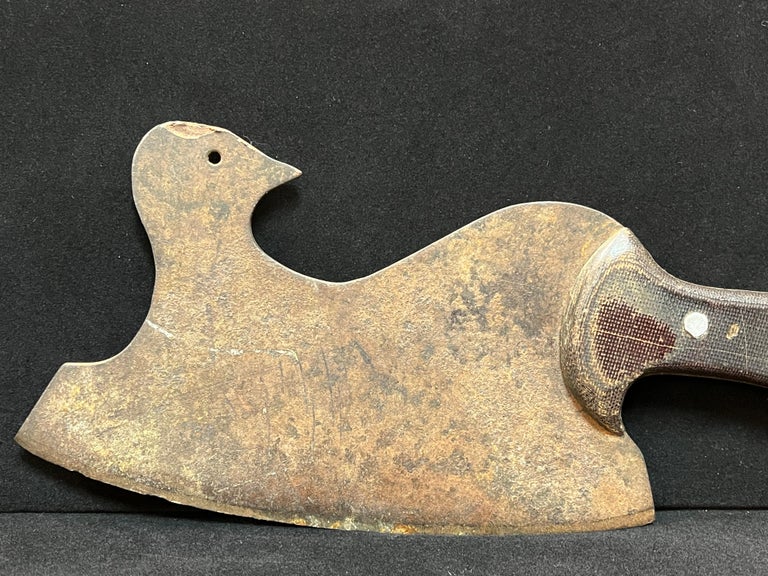Is a Cleaver a Bird? Unpacking the Curious Name of the Pileated Woodpecker
The pileated woodpecker is a crow-sized forest bird recognized by its flaming red crest and distinctive undulating flight. But where does its intriguing name come from? Specifically, is a “cleaver” referring to the bird itself or something else? Let’s explore the possible meanings behind this woodpecker’s name.
Pileated Woodpecker Basics
Before diving into the name, let’s cover some pileated woodpecker basics. These striking birds reach 15-19 inches in length with a wingspan up to 30 inches. Their most obvious feature is the bright red crest on the head of both males and females. When perched, they display primarily black plumage on the body and wings, with bold white stripes down the neck and face. In flight, white underwings become visible.
Pileated woodpeckers inhabit mature forests across much of North America. Using their powerful chisel-like bills, they hammer on dead trees and logs to excavate rectangular holes while searching for carpenter ants and other insect prey. Their constant drumming and calls announce their presence in the woods.
Etymology of “Pileated”
The pileated woodpecker’s scientific name is Dryocopus pileatus. Let’s break down what this means.
The genus name Dryocopus derives from two Greek words:
- Drys meaning “tree” or “oak tree”
- Kopis meaning “cleaver” or “woodcutter”
So one part of the name refers to trees or oak trees specifically. Meanwhile kopis signals a wood cleaver or cutter.
The species name pileatus comes from the Latin term meaning “capped” or “crested” – an obvious nod to the bird’s prominent red head crest.
Put together, the full scientific name Dryocopus pileatus roughly translates to “crested tree cleaver.” But is the “cleaver” in reference to the woodpecker itself, or the trees it excavates?
The Woodpecker as the “Cleaver”
One possibility is that kopis “cleaver” describes the pileated woodpecker as a wood-chiseling bird. Its strong, chisel-tipped bill is perfectly adapted for excavating and hammering away at wood. So in essence, the bird serves as a feathered tree cleaver.
This interpretation fits with the wood-cutting nature of woodpeckers. As these birds drill into wood seeking food, they act as little cleavers chipping away at tree bark and trunks. Their unique skills and hammering beaks help give them the “cleaver” designation.
Cleaving Into Tree Cavities
However, the “cleaver” descriptor could also refer directly to the behavior of chiseling into trees rather than the bird itself. As pileated woodpeckers excavate rectangular holes in search of food, they are essentially cleaving into the tree.
Their powerful bills allow them to chisel, pry and cut into the wood as they carve out cavities for roosting and nesting. So in this sense, kopis refers to the act of cleaving into tree trunks and branches rather than labeling the bird as a cleaver.
This interpretation seems plausible given that the rest of the scientific name centers on the bird’s tree-dwelling nature and its prominent crest. Calling out the cavity excavation behavior separate from the bird paints a more complete picture.
Other Meanings?
There may also be other layers of meaning not fully captured in a straightforward translation from Greek and Latin. Scientists often get creative with scientific names, packing in descriptive words that refer to mythology, physical features, behavior, habitat, and more.
So there could be additional symbolism and word play that led scientists to dub this bird Dryocopus pileatus. Teasing out those less literal references would require a deeper dive into the natural history behind the name.
To recap, the pileated woodpecker’s colorful scientific name contains clues about its appearance and behavior. One key descriptor is kopis meaning “cleaver” – but does this apply to the bird itself or its cavity carving actions? Or both?
While we may not have a definitive answer, the name “crested tree cleaver” beautifully encapsulates this woodpecker’s most prominent features and habits. It points to the bird’s showy red crest, its tree-dwelling nature, and its wood-excavating skills.
The next time you spot or hear one of these forest birds, you’ll have a new appreciation for its lyrical scientific name and the rich insights it provides. Whether the “cleaver” refers directly to the pileated woodpecker or not, the moniker suits this iconic species perfectly.
A cleaver movement of the bird #bird
FAQ
What is a cleaver?
Is there a cleaver bird?
What family are cleavers in?
Where do cleavers live?
What is a cleaver used for?
Cleavers are primarily used for cutting through thin or soft bones and sinew. With a chicken, for example, it can be used to chop through the bird’s thin bones or to separate ribs. Cleavers can also be used in preparation of hard vegetables and other foods, such as squash, where a thin slicing blade runs the risk of shattering.
What do Cleaver leaves look like?
The rounded ends of cleaver leaves have a sharp, bristle-like point (awn-tipped). They both have bristly-edged leaves, but a close examination of the bristles should also help with identification – the bristles on cleavers leaves point backwards, and those of sweet-scented bedstraw point forward.
What do cleavers look like?
The stems can reach up to 3 feet (0.91 m) or longer, and are angular or square shaped. The leaves are simple, narrowly oblanceolate to linear, and borne in whorls of six to eight. Cleavers have tiny, star-shaped, white to greenish flowers, which emerge from early spring to summer.
Are cleavers climbing plants?
Cleavers is a climbing plant, using the hooks on its stems to aid its scrambling progress. The hooks on its fruits attach to animals (and us) to help disperse its seeds. Covered in tiny hooks, the sticky nature of cleavers is enough to identify it easily.

